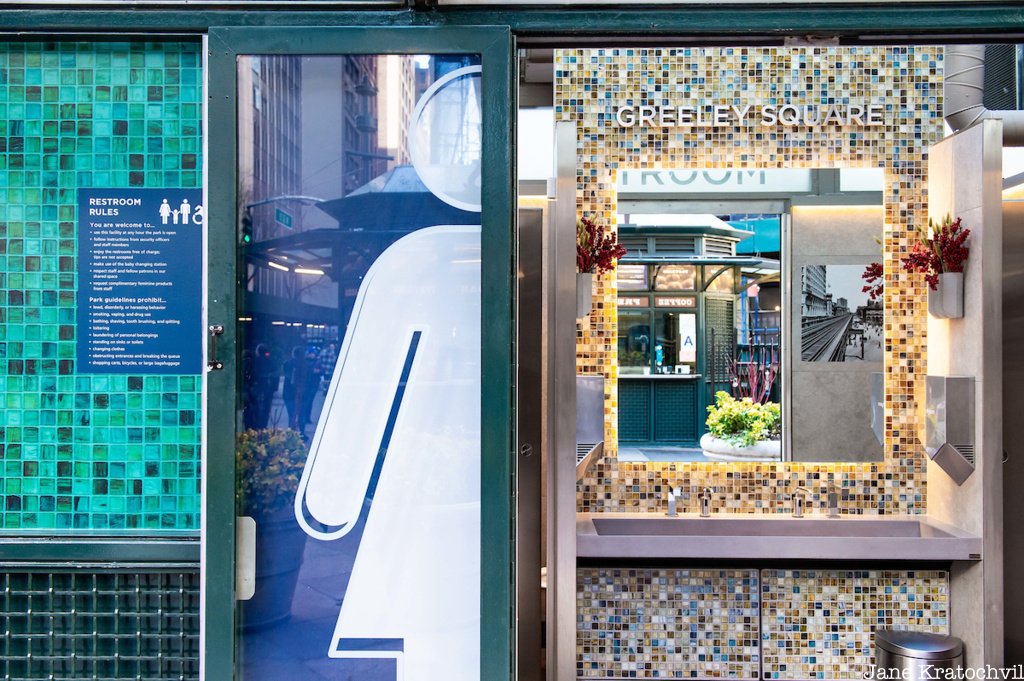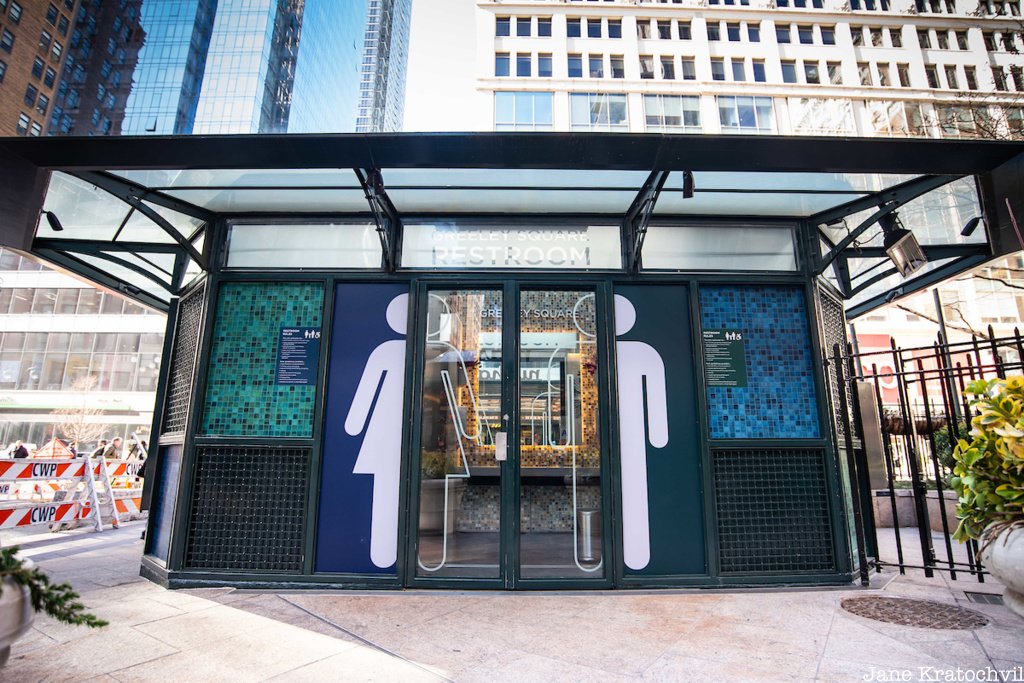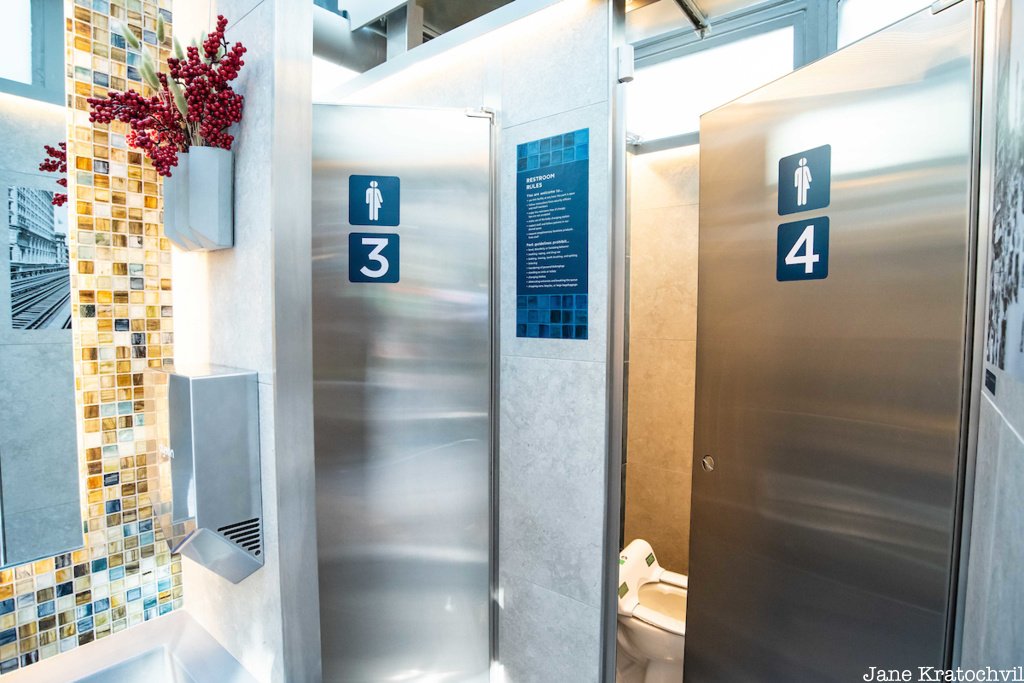Don't Flush an Opportunity!
Everyone has to go. That’s universal whether you’re young, old, man, woman, transgender, or non-binary. But somewhere along the way, this universal need became a hotbed for restrooms that just don’t quite fit the bill. Some are dirty. Some are too small to be accommodating. Some don’t have necessary supplies. And if this simple need is not fulfilled, it creates stress and anxiety for visitors."
Restroom goals: accessible to all, clean, and provides for basic needs … and while we’re at it, it might as well have a beautiful and unique design.
Emily Howard, PGAV Vice President, said, “When PGAV designers think about restrooms, we start with cleanability, convenience, and accessibility. We want to ensure that everyone who simply needs to use the restroom can do so while feeling safe and comfortable. Then we want to go beyond to create a beautiful, inviting space that serves the needs of all visitors.”
Accessibility
The Americans with Disabilities Act (ADA) was put into law in 1990 but is static, and little change has been made since its implementation. To develop a fully accessible restroom, go beyond the ADA.
Consider the size of the stalls. Will they accommodate more than one person? Is there room to maneuver and close the door with a wheelchair? Many people with disabilities need assistance.
Review where the grab bars are located. The ADA rules may not work for everyone who needs the bars, so evaluating if additional bars are necessary can help accessibility.
Restrooms that include adult changing tables.
Provide multiple accessible restrooms throughout the attraction. Unfortunately, many visitors must travel long distances or navigate multiple barriers to access a usable restroom.
Inclusion
It’s typical to see a bank of men’s rooms and a separate bank for women’s rooms. The number of companion restrooms has also increased, but can we go further to ensure all visitors are comfortable?
Howard explains, “A restroom with multiple stalls serves many people, but single rooms that are gender-neutral and family-friendly are much more accommodating and accessible. The restroom can then be a place where you can serve families, people with disabilities, people that need assistance, and those who are not comfortable choosing which restroom to use. Accessibility goes further than thinking about disability use—it should function for everyone.”




Step into most restrooms with stalls lined up, and you’ll also see large gaps, reducing privacy. Creating stalls with doors that extend to the floor with no gaps could improve visitors’ comfort. Single-use restrooms, each with a toilet and sink accessible to anyone, go further to include everyone in a safe and comfortable environment. The Baltimore Museum of Art houses private restrooms with floor-to-ceiling doors and communal sinks and are specifically labeled as “all gender.” The Newark Liberty International Airport recently opened all-gender restrooms. The space also features waiting areas for traveling companions and earned a spot on the 2022 Cintas America’s Best Restroom list.
Upgrading the Experience
The changing table. Dirty, broken, or completely missing, parents often have to “make-do” while tackling the tricky task of wrangling a little one to change a diaper. Pluie is the brand behind the world’s first self-sanitizing diaper-changing table, serving the needs of parents visiting a public location and reducing the load of janitorial services for the business owner. Olivia Beckman Stroube, Director of Growth at Pluie, says, “Now more than ever, there is a focus on health, wellness, and cleanliness. Customers make direct business purchasing decisions based on their impression of how much a business thinks of and acts on those factors.”
As attractions focus on sustainability measures, upgraded changing tables could fit those goals too. “Sanitizing with UV light removes or reduces the use of expensive and harsh chemicals as well as the excessive use of paper products used by both janitorial services and customers—and not just while cleaning. Many parents will grab handfuls of paper towels to lay on the old, outdated tables because it’s dirty. That’s not a sustainable option,” Beckman Stroube explains.
And remember, missing tables are just as bad, if not worse. Changing tables should be available in all restrooms.
Necessities
Toilet paper and soap are necessities in a well-done restroom. But feminine hygiene products are often overlooked. Menstrual products are a necessity, just like toilet paper. Imagine a guest leaving the theme park because she forgot a tampon. Or a young teenager on a field trip who starts her period for the first time. A study by Free the Tampons showed that 86% of women have gotten their period while at a public place without supplies. That means a large swath of visitors to an attraction have been caught unprepared. The same study showed that only 8% of women reported that dispensers in public restrooms work all the time, leaving many visitors in a potentially embarrassing and frustrating situation. The number of women and girls who suffer from period poverty is staggering.
Here are some other things to think about:
Dispensers are often broken or unstocked.
Dispensers require quarters, but many people don’t carry change.
The products available in most machines may not be of the best quality—and possibly dangerous. Products can have dioxins, pesticides, and other toxins. They are not only bad for women’s health but bad for the environment.
There’s help for attractions that want to serve their guest more thoughtfully. Companies like Femly and Aunt Flow are working to make period products free and accessible to all, including visitors to attractions. They serve visitors' needs with contactless dispensers and organic cotton materials—for free.
Sittin’ Pretty
Restrooms don’t have to be stark, stainless-steel fortresses. Whether it’s a restroom that shares a wall with an animal habitat or extends conservation messaging to the stall doors, educational, artistic, and creative design can enhance a restroom.
Have you ever wondered how astronauts go to the bathroom? Visit the restrooms at the National Air and Space Museum to learn. Graphics in the restrooms show how toilets work in space. The Charleston Museum displayed chamber pots in the restroom, extending educational opportunities. Imagine how many conversations this could start with children (and adults)!
From Magic Kingdom’s Tangled-themed restroom to the New York City subway-themed restroom at Two Cities Pizza in Ohio, pulling elements from the attraction’s theme can create unique environments that guests enjoy visiting. “While you don’t want the restroom to be the only reason a visitor buys a ticket to your attraction, well-thought, well-designed restrooms can enhance the visitor experience, inviting everyone to feel comfortable,” Howard explains.
Reinvention is more fun with friends. Got a topic you want to see on Destinology?
Email us at destinology@pgav.com or start a conversation on Facebook, Twitter on LinkedIn.
Tap the buttons below.






